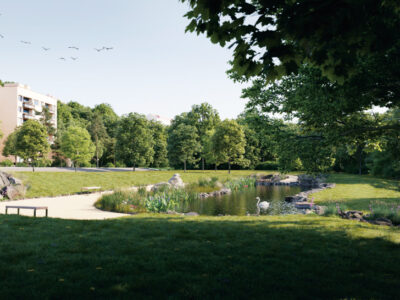Planned restoration of aquatic ecosystems in Prague 4
Prague 4 district in accordance with the National Action Plan for Adaptation to Climate Change [1], Concept for Protection from the Effects of Drought of the Czech Republic [2], Strategy for Adaptation of the Capital City of Prague to Climate Change [3] and Methodology for Rainwater Management in the City [4, 5], similarly to other progressive-minded parts of Prague, is preparing investment actions to support and strengthen green-blue infrastructure in the city. One of the most visible measures with truly demonstrable effects on the support of biodiversity and water retention in the landscape is the restoration of aquatic ecosystems. In the case of the capital city of Prague and its most populous district of Prague 4, these are mainly the restoration of canalized (straightened or piped) streams, or desilting, strengthening or comprehensive restoration of ponds and small water reservoirs in a highly urbanized landscape. A specific area is newly emerging bodies of water in places where water naturally tends to be retained after longer periods of rainfall and the area thus cannot be used for any other purpose, or even in places where there was no body of water before (although here in the narrower sense of the word it is not restoration). For such areas created by human intervention in order to strengthen the diversity of aquatic and wetland vegetation, the name artificial aquatic biotope has been adopted. Let us have a look at the differences and specific pitfalls of individual restoration using three specific examples.
